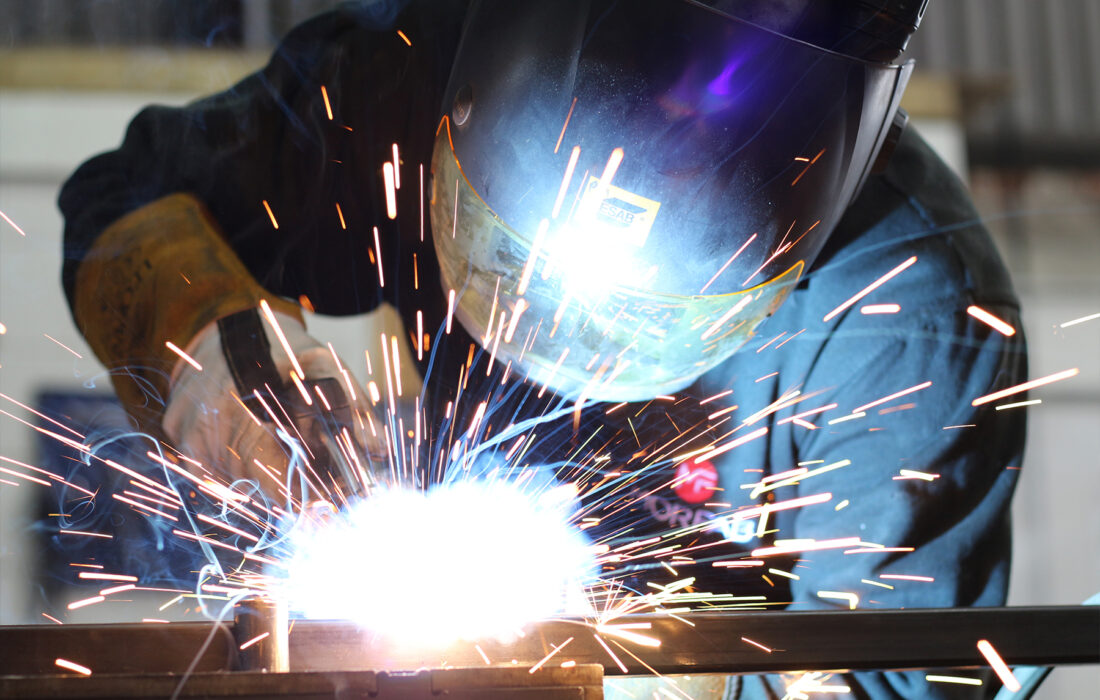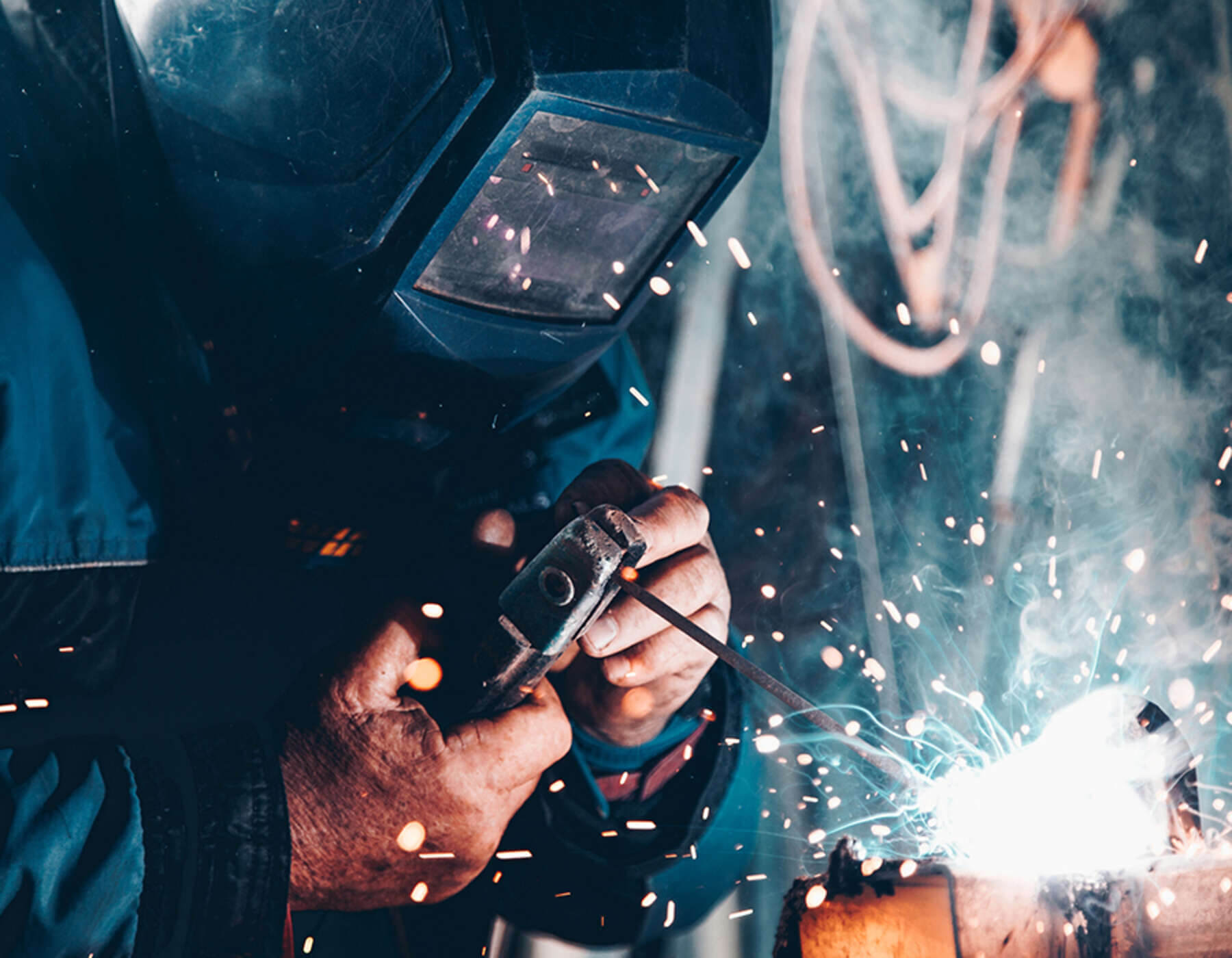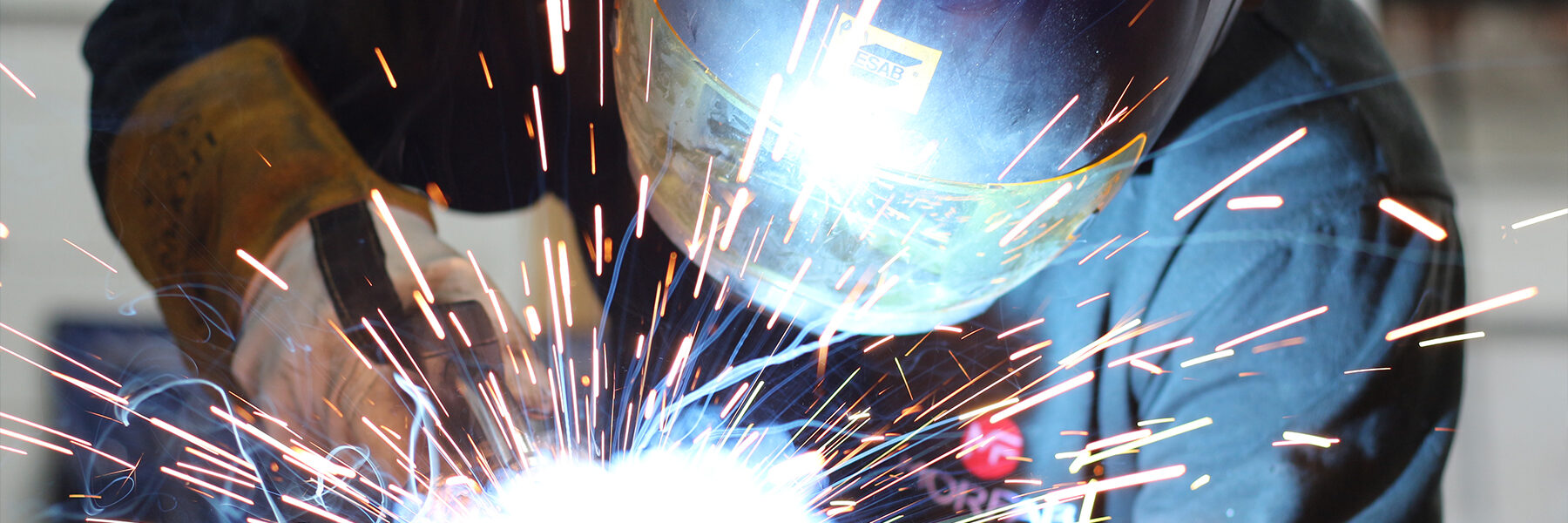
Helping to create unique metalwork structures and playing an intrinsic role in projects on both a small and a large scale, steel fabrication and welding are vital steps and elements to, often, a much larger operation.
However, fabrication and welding are two very distinct activities, and it’s important to understand the differences between the two, knowing what each can offer you and their importance in part of a more extensive process.
In their simplest forms, fabrication is the entire process that sheet metal or steel goes through to achieve a final product—products such as metal gates, steel structures within homes, artwork, and more.
There will be many stages within the fabrication process to achieve this final product, and this is when welding comes in.
Welding is a singular part of the fabrication process and is required when two parts need to come together to create one.
Metal fabricators can be trained welders, and welders can also be fabricators. In fact, many of the operations and procedures carried out during the fabrication process will be carried out by the same team of fabricators, meaning when you work with a professional team (like the team at Morfab) you can have confidence that you will be working with individuals who are highly trained and have a very specialist skill set when it comes to working with metal and steel.
Welding and Metal Fabrication – The Basics
Welding
Welding is a process of joining pieces of metal together as part of the overall fabrication process. Helping to put the pieces together, we often use the method of welding to repair automobile or aircraft parts as well as fuse steel structural components together.
A highly skilled procedure, welding uses a combination of heat and pressure depending on the type of welding method used.
For example, depending on the requirements of the project, a professional welder may choose:
- GTAW (TIG) welding– suitable for welding stainless steel, aluminium, copper, bronze, brass, and more.
- GMAW (MIG) welding– typically used when working with large or thicker materials. MIG welding is also more cost-effective, with shorter lead times due to high levels of efficiency.
- SMAW (MMA or Stick) welding– also known as arc welding, MMA welding involves applying filler metal into the weld, joining together high-resistance carbon steels such as stainless steel, cast iron, etc.
Whatever method you use, the welding process ultimately melts two metals together to form a strong, clean, and final piece. A final piece that is presentable and reliable.
However, we must stress welding is only one step in the fabrication process; other actions may include cutting, profiling, bending, etc.
Metal Fabrication
Metal fabrication is a comprehensive process that results in the production of a metal structure. For example, taking raw materials and turning them into a usable product (or, in some cases, a work of art – make sure to check out the Apertura 1900 project).
Ultimately, it follows a process from beginning to end, where a number of activities and works take place depending on what is required to make the actual metalwork product.
From designing to welding, CNC profiling, and finishing, fabrication moves from concept to finished product, with the specialist fabricator project managing each stage and step of the process.
Fabrication process
Developing the concept
Taking your idea and producing extensive CAD designs and drawings, scoping out the work, developing your concept, and what can be achieved is the first step in the fabrication process.
Analysing the project
What resources are required, and who will you be working with as part of the project, i.e., designers’ architects, etc.
Project management
Organising all parts of the process, i.e., cutting, bending, extruding, folding, punching, welding, finishing, etc., it is vital to ensure everything is considered and achieved to a high standard before moving on to the next stage.
Finished product
What happens to the final product? Does it require delivery or installation? Who is responsible for this? Who has final sign off?
A specialist team at your service
All metal structures will undergo some form of fabrication, creating strong, reliable, cost-effective custom structures and projects.
Welding and fabrication are very distinct parts of a larger process, and both require specialist tools and equipment.
At Morfabrication, our teams are highly specialised in all elements of the fabrication process. Ensuring all projects are finished to a high quality and as specified.
Taking your project from concept to delivery or working to your pre-defined specifications, contact us today at 07825 909 669 or drop us an email at info@morfabrication.com to see how we can help you.

